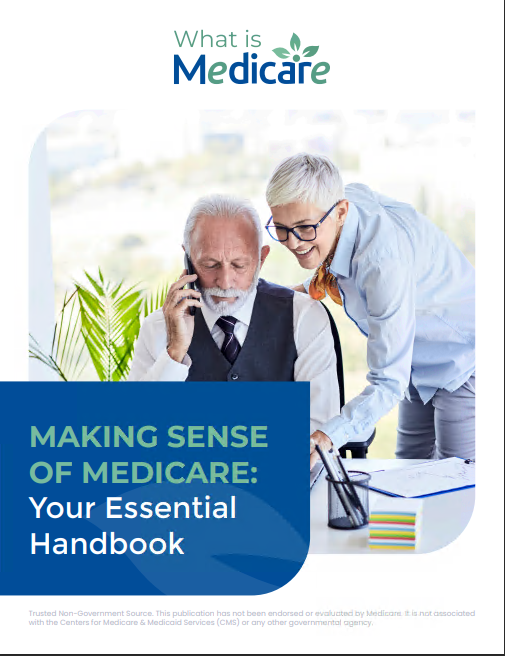Key Takeaways
-
Medicare doesn’t cover all your healthcare expenses, potentially leaving gaps that can be financially significant.
-
Knowing how and when to fill Medicare coverage gaps ensures you’re protected from unexpected medical bills.
Understanding Your Medicare Coverage Basics
If you’re like most Americans approaching Medicare eligibility, you’re probably expecting Medicare to cover most of your healthcare costs. While it’s a helpful program, you might be surprised to learn Medicare doesn’t pay for everything. Knowing what isn’t covered helps you avoid financial pitfalls down the road.
Let’s explore the most common gaps in Medicare coverage and discuss how to fill them to secure your health—and wallet—in 2025 and beyond.
What Medicare Covers (and What it Doesn’t)
Medicare is divided into several parts, each covering different healthcare needs:
-
Part A: Covers inpatient hospital stays, skilled nursing facility care (limited to 100 days), hospice, and some home health care. It doesn’t cover long-term care or most nursing home stays.
-
Part B: Includes outpatient care, preventive services, doctor visits, and some home health care. However, you’ll pay premiums, deductibles, and typically 20% coinsurance for most services.
-
Part D: Prescription drug coverage, with plans varying in premiums and coverage details, capped at $2,000 out-of-pocket for medications in 2025.
But here’s the kicker: Original Medicare won’t cover dental, vision, hearing aids, long-term custodial care, or routine foot care. Without additional coverage, these expenses could quickly add up.
Gap #1: Dental, Vision, and Hearing—You’re Mostly on Your Own
If you assume Medicare covers dental, vision, and hearing, you’re not alone. Unfortunately, basic Medicare doesn’t cover routine dental checkups, eye exams for glasses, or hearing aids.
Here’s what you’re responsible for:
-
Dental care: Routine cleanings, fillings, dentures, and implants are entirely your responsibility. Costs can quickly add up, especially if extensive dental work is needed.
-
Vision: Eye exams and corrective lenses are out-of-pocket unless related to a medical condition, like cataracts.
-
Hearing: Hearing aids, exams, and fittings aren’t covered. This leaves you with potentially significant expenses if you experience hearing loss.
Filling the Gaps: Options for Dental, Vision, and Hearing Coverage
Fortunately, you have ways to cover these gaps:
-
Medicare Advantage (Part C): Often includes dental, vision, and hearing coverage. However, coverage and costs vary widely, so compare plans carefully during the Open Enrollment (October 15 – December 7).
-
Supplemental plans: Standalone dental, vision, and hearing insurance policies are also available.
Review these carefully during Medicare Open Enrollment (October 15 to December 7) each year, ensuring you find the best coverage for your budget and needs.
Gap Alert: Long-Term Care Isn’t Covered by Original Medicare
A widespread misconception is that Medicare covers long-term care, such as assisted living or long-term nursing home stays. The truth? Medicare covers limited short-term care following hospitalization, not the extended care often necessary for aging adults.
-
Short-term skilled nursing: Covered up to 100 days following a hospital stay of at least three consecutive inpatient days, with coinsurance of $209.50 per day starting day 21.
-
Long-term care: Medicare doesn’t cover personal care, assisted living, or long-term nursing home stays beyond the limited initial coverage.
These expenses can range from $4,500 to over $8,000 per month, rapidly depleting your savings if unprepared.
Bridging the Long-Term Care Gap
To protect yourself financially from long-term care expenses, consider these alternatives:
-
Long-term care insurance: Offers coverage for assisted living, home care, and nursing homes. Purchasing coverage in your 50s or early 60s usually provides the best rates.
-
Life Insurance Riders: Certain policies allow acceleration of death benefits for long-term care needs.
-
Personal savings: Start saving early, considering health savings accounts (HSAs) if eligible.
Prescription Drug Coverage Gaps You Should Know
Medicare Part D covers prescription drugs, but coverage gaps persist:
-
Deductible phase: You pay the first $590 of drug costs (maximum in 2025).
-
Initial coverage phase: You pay copays or coinsurance until your drug costs reach $2,000.
-
Catastrophic coverage phase: After you pay $2,000 out-of-pocket in 2025, your plan covers 100% of covered medications for the rest of the year.
The elimination of the donut hole in 2025 simplifies Part D coverage significantly. Still, drug costs can accumulate quickly early in the year.
Staying Ahead of Prescription Costs
Consider these strategies to manage your prescription drug expenses effectively:
-
Compare plans annually: During Open Enrollment (October 15 to December 7), evaluate plans based on your medications.
-
Medicare Prescription Payment Plan: New in 2025, this lets you spread drug costs evenly over the year, easing budgeting burdens.
-
Pharmacy programs: Many pharmacies offer discount programs that complement your Part D coverage.
Beware: Medicare Doesn’t Travel Well
Planning retirement travel? Remember, Medicare typically doesn’t cover healthcare services outside the United States, except under limited circumstances, such as emergencies near U.S. borders or certain cruise ship situations.
If you become ill abroad, medical bills can escalate, leaving you financially vulnerable.
How to Stay Covered When You Travel
Ensure peace of mind on your adventures by:
-
Travel insurance: Buy a policy covering emergency medical treatment abroad.
-
Medigap policies: Some Medigap plans offer limited coverage for international travel emergencies.
Always check your coverage limitations before traveling abroad.
Medicare and Alternative Healthcare—Usually a No-Go
Interested in alternative treatments? Basic Medicare generally doesn’t cover services such as acupuncture, naturopathy, massage therapy, or chiropractic services beyond medically necessary spinal adjustments.
Covering Alternative Care Expenses
If alternative care matters to you:
-
Medicare Advantage plans: Some offer supplemental coverage for alternative treatments, though availability varies significantly.
-
Out-of-pocket: Budget personally if alternative healthcare is crucial to your lifestyle.
Review coverage annually during Open Enrollment (October 15 to December 7) to see if plans now accommodate your needs.
The Biggest Mistake? Assuming You’re Fully Covered
Medicare is a valuable resource but isn’t comprehensive health coverage. The biggest mistake you can make is assuming Medicare will handle everything.
Here’s a quick checklist to avoid surprises:
-
Review your Medicare plan annually during Open Enrollment.
-
Consider supplementing Medicare with additional policies (Medigap, Medicare Advantage, standalone dental/vision coverage).
-
Factor healthcare gaps into your retirement planning early to avoid financial stress.
Get Proactive—Annual Review is Essential
Your healthcare needs evolve, and Medicare plans change annually. Each fall, between October 15 and December 7, review your coverage to ensure it still meets your needs.
Changes to premiums, copays, deductibles, or covered services can significantly impact your healthcare budget and access. Regularly consulting with a licensed agent ensures you’re always optimally covered.
Planning Now Means Less Stress Later
Filling Medicare gaps requires forethought. Tackling gaps now prevents stressful surprises later, giving you peace of mind. Consider supplemental insurance like Medigap, Medicare Advantage, or standalone insurance products.
Act early—waiting can limit your choices, increase costs, or leave you unprotected at crucial moments.
Secure Your Medicare Coverage Now
Medicare is a solid foundation for retirement healthcare, but it’s rarely enough on its own. Be proactive, understand your options, and take steps to secure comprehensive coverage.
For personalized guidance tailored specifically to your situation, contact a licensed agent listed on this website today for professional advice.










